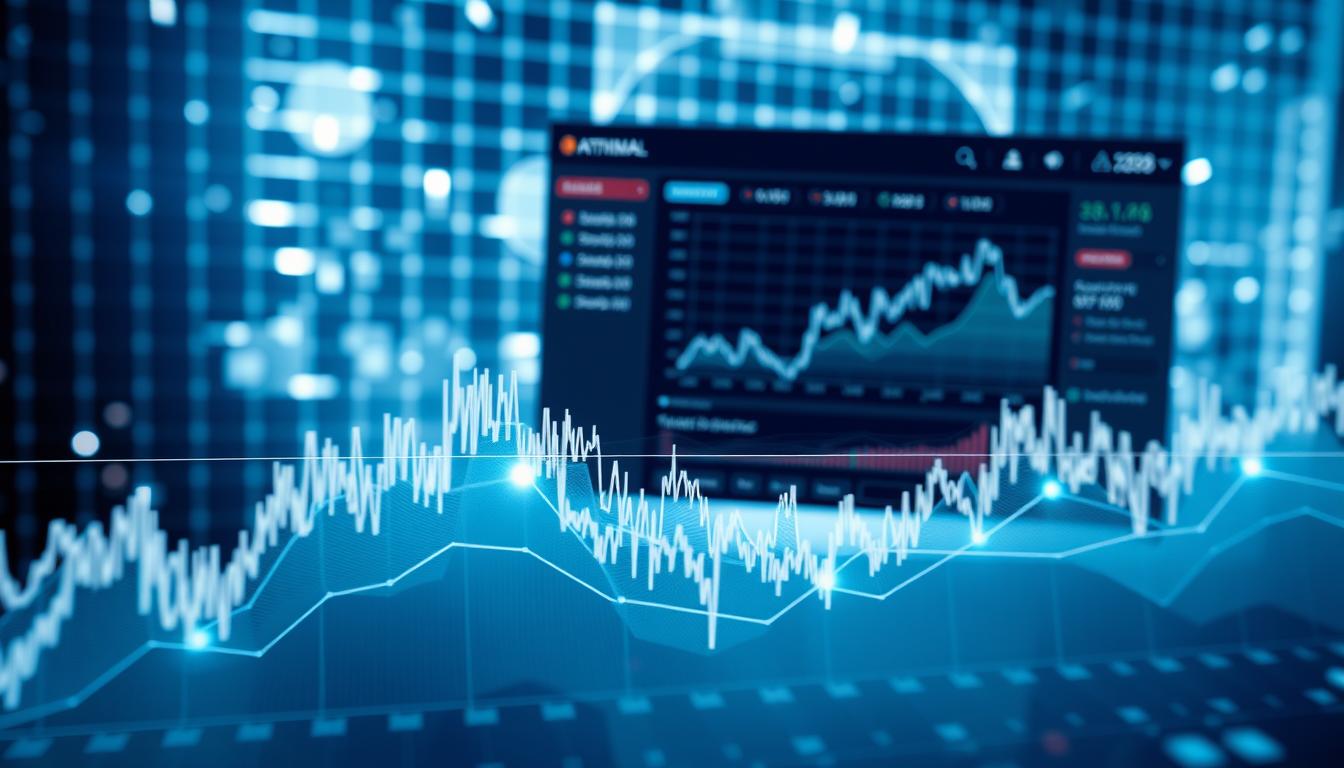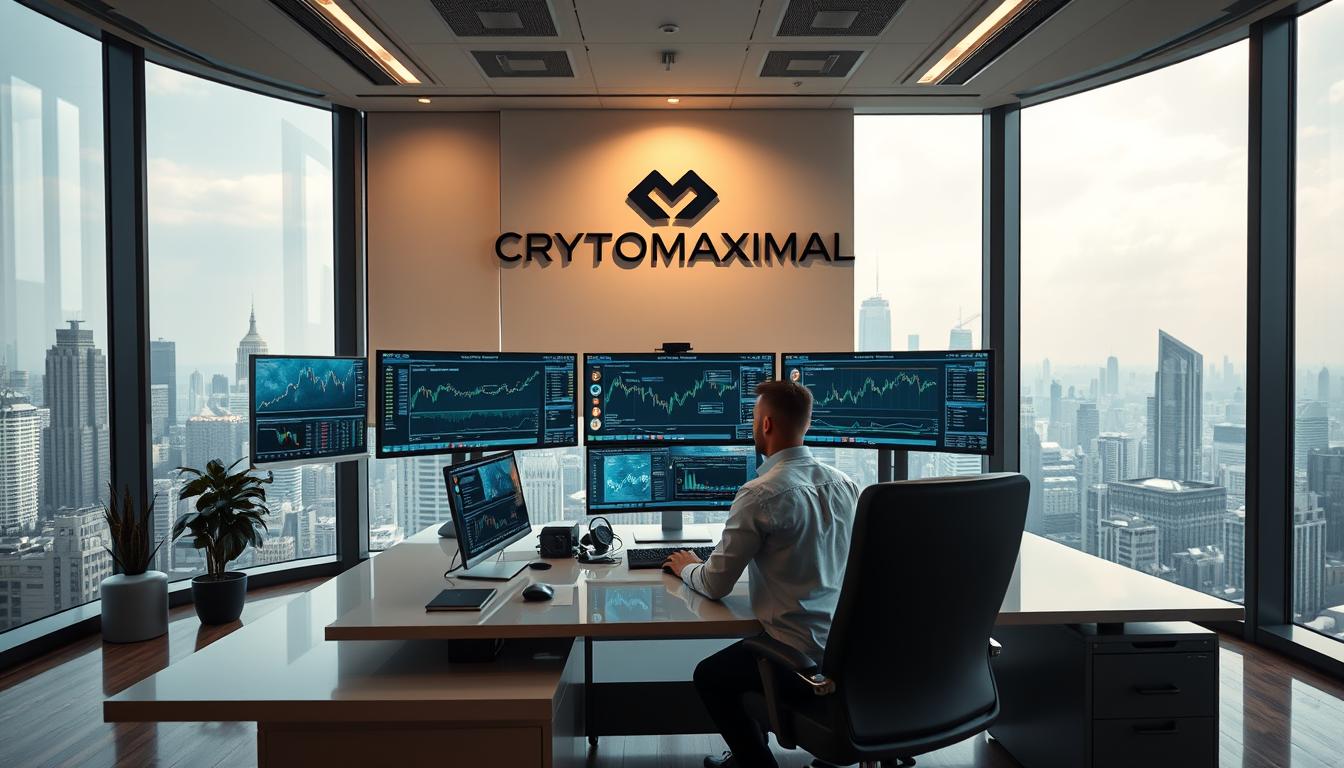Now Reading: Exploring the Reliability of AI-Generated Crypto Signals
- 01
Exploring the Reliability of AI-Generated Crypto Signals
Exploring the Reliability of AI-Generated Crypto Signals

In today’s fast-paced market, technology plays a pivotal role in decision-making. Tools like Syntium Algo have gained attention for their ability to adapt in real-time, offering insights that can guide trading strategies. For instance, their 2025 performance showcased a 35% success rate in predicting breakouts, demonstrating their potential in volatile environments.
However, relying solely on artificial intelligence isn’t always the answer. A balanced approach, combining human expertise with advanced tools, is essential. Systems like Token Metrics emphasize multi-factor validation, ensuring signals are thoroughly evaluated before use.
This guide will explore the technical aspects of trading signals, address common concerns, and help you choose the right tools for your needs. Whether you’re new to crypto trading or an experienced trader, understanding these dynamics is crucial for success.
What Are AI Crypto Signals?
The digital age has transformed how traders approach the market. One of the most significant advancements is the use of trading signals generated by machine learning. These signals are automated recommendations that help traders decide when to buy or sell assets.
Definition and Purpose
AI-driven trading signals are created using complex algorithms. These tools analyze vast amounts of data, such as price movements, volume, and market sentiment. The goal is to identify patterns that can predict future market behavior.
Unlike manual analysis, which is time-consuming and prone to human error, these systems work in real-time. They can process information at a scale and speed that humans simply cannot match. This makes them invaluable for traders looking to stay ahead in volatile markets.
How AI Generates Trading Signals
Machine learning models, like neural networks, are at the core of this process. They examine historical and real-time data to spot trends. For example, Syntium Algo combines technical analysis with sentiment analysis to provide actionable insights.
Token Metrics takes it a step further with its 8-factor confluence model. This approach evaluates multiple indicators to ensure signals are robust. Common inputs include order books, whale wallet activity, and news cycles.
These systems are designed to adapt to changing market conditions. By continuously learning from new data, they improve their accuracy over time. This makes them a powerful tool for traders of all experience levels.
The Rise of AI in Crypto Trading
Modern traders are embracing innovative tools to navigate complex markets. The adoption of advanced technologies has surged, with a 400% increase in AI-driven tools since 2022. This shift reflects the growing need for efficiency and precision in decision-making.
Why Traders Are Turning to AI
Manual strategies struggled during the 2024 bear market, with high failure rates. Traders faced challenges in adapting to rapid market changes. This highlighted the limitations of traditional methods and the need for more robust solutions.
AI tools, like those from Token Metrics, offer a way to overcome these challenges. Their 2023 EOS prediction accuracy showcased the potential of machine learning in identifying trends. This case study demonstrated how data-driven insights can lead to better trading strategies.
The Evolution of AI in Financial Markets
The journey from simple moving averages to deep learning has been transformative. Early technical indicators provided basic insights, but modern systems analyze vast datasets in real-time. This evolution has opened new opportunities for traders.
Regulatory changes have also played a role in this growth. Policies enabling algorithmic trading have encouraged innovation. As a result, adoption rates in crypto trading now outpace those in traditional forex markets.
- 400% increase in AI tool adoption since 2022.
- High failure rates of manual strategies in 2024.
- Evolution from simple indicators to deep learning.
- Token Metrics’ 2023 EOS prediction accuracy.
- Regulatory changes driving algorithmic trading growth.
- Crypto adoption rates surpassing traditional forex markets.
How AI Crypto Signals Work
Understanding the mechanics behind automated trading tools can empower traders to make informed decisions. These systems rely on a combination of data and algorithms to generate actionable insights. By breaking down the technical processes, retail traders can better navigate the complexities of modern markets.
Data Sources and Analysis
Automated tools gather information from a wide range of sources. Syntium Algo, for example, uses a 14-data-point analysis to evaluate market data. This includes price movements, volume trends, and even GitHub activity for blockchain projects.
Token Metrics takes a different approach with its whale wallet tracking system. By monitoring large transactions, it identifies potential patterns that could influence market behavior. This multi-factor validation ensures signals are robust and reliable.
Machine Learning and Predictive Models
At the core of these systems are advanced learning models. LSTM networks, for instance, excel at time-series prediction. They analyze historical and real-time data to forecast future trends.
There are two primary approaches: supervised and reinforcement learning. Supervised learning relies on labeled datasets, while reinforcement learning adapts based on feedback. Syntium Algo’s proprietary volatility index is a prime example of how these models can enhance trading strategies.
- 27 common data inputs, including GitHub activity and order books.
- LSTM networks for accurate time-series prediction.
- Supervised vs. reinforcement learning approaches.
- Syntium Algo’s proprietary volatility index.
- Token Metrics’ whale wallet tracking system.
- Challenges in data cleaning for low-cap altcoins.
AI Crypto Signal Accuracy and Reliability
Evaluating the effectiveness of automated trading tools requires a deep dive into their performance metrics. Understanding how these systems perform in real-world scenarios can help traders make better decisions.

Factors Affecting Accuracy
Several elements influence the performance of trading tools. Market conditions play a significant role, as volatility can impact the ability to predict movements accurately. Liquidity is another critical factor, especially for small-cap assets where data may be less reliable.
Technical indicators are also essential. Tools that use multiple data points tend to perform better. For example, Syntium Algo’s 14-data-point analysis provides a comprehensive view of the market, enhancing its reliability.
Real-World Performance Metrics
Industry benchmarks for 2025 show accuracy rates ranging from 55% to 75%. Syntium Algo’s Q1 2025 performance included a 2.1 profit factor, indicating strong results. Token Metrics, on the other hand, achieved a 0.89 Sharpe ratio, demonstrating consistent returns.
Bear and bull markets show different outcomes. Tools often perform better in stable conditions. Maximum drawdown is another key metric, highlighting potential risks in risk management strategies.
- 2025 industry accuracy benchmarks: 55-75% range.
- Syntium Algo’s 2.1 profit factor in Q1 2025.
- Liquidity impact on small-cap predictions.
- Bear vs. bull market performance differences.
- Token Metrics’ 0.89 Sharpe ratio verification.
- Importance of maximum drawdown in risk assessment.
For more detailed insights, check out Syntium Algo’s analysis on signal accuracy.
Benefits of Using AI Crypto Signals
The integration of advanced tools in trading has opened new doors for investors. These systems provide a range of advantages, from improved decision-making to enhanced risk management. By leveraging data and automation, traders can navigate complex market conditions with greater confidence.
Data-Driven Decision Making
Automated tools analyze vast amounts of information to identify trends and patterns. For example, Syntium Algo reduces emotional trading errors by 34%, ensuring decisions are based on logic rather than impulse. This approach minimizes risks and maximizes opportunities.
Real-Time Market Analysis
These systems process information in milliseconds, offering a significant edge in fast-paced markets. Syntium Algo’s 78ms execution speed ensures traders can act swiftly during volatile periods. Token Metrics’ real-time API further enhances this capability, providing up-to-the-minute insights.
Enhanced Risk Management
Automated tools use advanced models to assess and mitigate risks. During the 2024 Bitcoin flash crash, systems like Syntium Algo helped traders minimize losses through rapid adjustments. Portfolio rebalancing automation also ensures consistent risk management without manual intervention.
These benefits highlight why automated tools are becoming essential for modern trading strategies. By combining speed, accuracy, and adaptability, they offer a powerful solution for traders of all experience levels.
Challenges and Limitations of AI Crypto Signals
While automated tools offer significant advantages, they are not without challenges. Understanding these limitations is crucial for traders aiming to make informed decisions. From data quality issues to external factors, several elements can impact the effectiveness of these systems.
Data Quality and Bias
One of the primary concerns is the quality of data used by automated systems. Inaccurate or biased data can lead to flawed predictions. For example, the 2023 FTX collapse highlighted how wash trading data contamination can skew results.
Syntium Algo’s bias detection framework addresses this issue by identifying and correcting data anomalies. However, challenges remain, especially in low-liquidity pairs where false positive rates can reach 22%.
Overreliance on Automation
Another limitation is the potential overreliance on automation. While these systems can process vast amounts of information quickly, they lack human intuition. This can lead to missed opportunities or misinterpretation of market conditions.
Regulatory announcement lag times further complicate matters. Automated systems may not always adapt swiftly to sudden changes, increasing risk for traders.
Market Volatility and External Factors
Market volatility and external events can also impact the performance of automated tools. The Terra Luna collapse prediction attempts demonstrated how unpredictable crypto market movements can be.
Despite advanced models, these systems may struggle during extreme conditions. A balanced approach, combining automation with human judgment, is often the best strategy.
For more insights on navigating these challenges, explore this detailed guide on trading systems.
Can AI Accurately Predict Crypto Prices?
Predicting future prices has always been a challenge in volatile markets. While advanced tools have made strides, skepticism remains about their ability to forecast accurately. This section explores the science behind these predictions and their limitations.
The Science Behind AI Predictions
Markov chain models are often used to map probabilities in price movements. These models analyze historical data to predict future trends. For example, Syntium Algo achieved an 83% accuracy rate in predicting Bitcoin trends, showcasing the potential of these systems.
Another approach involves technical analysis combined with machine learning. Tools like Syntium Algo use multiple data points to identify patterns. The 35% DEGEN prediction case highlights how these models can adapt to specific assets.
- Markov chain models for probability mapping.
- Syntium Algo’s 83% BTC trend accuracy.
- Multi-factor analysis for identifying patterns.
Limitations of AI in Price Forecasting
Despite advancements, predicting black swan events remains nearly impossible. These sudden, unpredictable occurrences can disrupt even the most advanced models. The ENA correction alert demonstrated how external factors can impact predictions.
Memecoins present unique challenges due to their speculative nature. News latency, averaging 9.2 seconds, also affects real-time predictions. A 2025 study comparing human traders to automated systems found that while tools excel in stable conditions, they struggle during extreme volatility.
- Black swan event prediction impossibility.
- Memecoin prediction challenges.
- News latency impact (avg 9.2sec delay).
- 2025 AI vs human trader performance study.
Understanding these limitations helps traders use tools more effectively, combining automation with human judgment for better results.
AI vs. Traditional Trading Strategies
The evolution of trading tools has sparked a debate between modern systems and traditional methods. While manual analysis has been the cornerstone of trading for decades, advanced systems are now offering faster and more precise insights. This section explores how these approaches compare and why traders are shifting toward automation.

Comparing Modern Systems to Manual Analysis
Manual analysis relies on human interpretation of technical indicators like RSI and MACD. While effective, this method is time-consuming and prone to errors. In contrast, modern systems use algorithms to process data in milliseconds, reducing delays and improving accuracy.
A 2024 backtest compared traditional MACD analysis to automated systems. The results showed a 68% faster signal generation rate with modern tools. This speed advantage allows traders to act swiftly during volatile market conditions.
Advantages of Advanced Systems Over Traditional Indicators
Advanced systems like Syntium Algo use multi-timeframe synthesis to identify trends more effectively. This approach minimizes false breaks often seen in traditional support and resistance levels. Additionally, these systems achieve a 41% higher Sharpe ratio, indicating better risk-adjusted returns.
A case study highlighted the detection of hidden divergence by modern tools. This feature, often missed by manual analysis, provides traders with actionable insights. By combining speed, accuracy, and adaptability, advanced systems are redefining trading strategies.
- 68% faster signal generation rates compared to MACD.
- Multi-timeframe synthesis reduces false breaks.
- 41% higher Sharpe ratio with modern systems.
- Case study: Detection of hidden divergence.
Key Metrics to Evaluate AI Crypto Signals
Assessing the effectiveness of trading tools requires a focus on key metrics. These indicators help traders determine the performance and reliability of their strategies. By understanding these metrics, you can make informed decisions and optimize your approach.
Accuracy Rate and Profit Factor
The accuracy rate measures how often a system’s predictions are correct. For example, Syntium Algo achieved a 65% accuracy rate in 2023, showcasing its potential. However, accuracy alone isn’t enough. The profit factor, calculated as gross profits divided by gross losses, provides deeper insights.
For instance, a profit factor of 2.1 means the system generates twice as much profit as loss. In an ETH trading scenario, a high profit factor indicates strong risk management and consistent returns.
Sharpe Ratio and Maximum Drawdown
The Sharpe ratio evaluates risk-adjusted returns. A ratio between 0.5 and 2.0 is considered optimal. Syntium Algo’s 14-month performance report highlighted a Sharpe ratio of 1.8, demonstrating its effectiveness in balancing risk and reward.
Maximum drawdown measures the largest loss from a peak to a trough. This metric is crucial for understanding potential risk during volatile periods. Tools with lower drawdowns are generally safer for long-term strategies.
- Profit factor calculation: Gross profits ÷ Gross losses.
- Optimal Sharpe ratio range: 0.5-2.0.
- Syntium Algo’s 14-month performance highlights.
- Win rate vs. risk-adjusted returns analysis.
- Token Metrics’ 3-tier metric scoring system.
- Warning: Avoid vanity metrics in provider marketing.
By focusing on these metrics, traders can build a practical evaluation framework. This approach ensures that trading strategies are both effective and sustainable.
How to Choose the Right AI Signal Provider
Selecting the right tools for trading requires careful evaluation. With numerous trading platforms available, it’s essential to focus on transparency and performance. A reliable provider can offer opportunities to enhance your strategies and adapt to changing market conditions.
Transparency and Track Record
Start by examining the provider’s track record. Look for audited performance data spanning at least 18 months. For example, Token Metrics provides historical data from 214 trades, offering insights into their system’s consistency. Transparency is key—avoid providers with fake volume or spoofed signals.
Verification steps are crucial. Syntium Algo, for instance, offers a 90-day demo access, allowing users to test their system before committing. This hands-on approach ensures you’re investing in a proven solution.
Backtesting and Live Performance
Backtesting is a critical factor in evaluating trading bots. A minimum of 100 trades is recommended to assess accuracy and reliability. Syntium Algo’s verification process includes rigorous backtesting, ensuring their system performs well in real-world scenarios.
API integration testing is another essential step. It ensures the system can seamlessly connect with your preferred trading platforms. By combining backtesting and live performance analysis, you can make informed decisions and maximize your opportunities in the market.
Here’s a quick checklist to guide your selection:
- Require 18-month audited track records.
- Analyze historical data like Token Metrics’ 214 trades.
- Test API integration for seamless connectivity.
- Utilize demo access, such as Syntium Algo’s 90-day trial.
- Verify authenticity to avoid fake signals.
AI Crypto Signals for Different Trading Styles
Different trading styles require tailored approaches to maximize success. Whether you’re a day trader or a long-term investor, the right tools can make a significant difference. Advanced systems like Syntium Algo adapt to various strategies, offering solutions that fit your unique needs.
Day Trading with AI Signals
Day trading demands quick decisions and precise execution. Syntium Algo’s 5-minute interval signals provide real-time insights, helping traders capitalize on short-term price movements. These tools analyze trends and patterns, ensuring you stay ahead in fast-paced markets.
Position sizing automation is another key feature. It ensures optimal allocation based on trade conditions, reducing risks and maximizing returns. A 2024 case study showed that automated systems enabled 39% faster exits compared to manual trading, giving day traders a competitive edge.
Swing Trading and Long-Term Strategies
Swing traders and long-term investors benefit from tools that identify broader trends. Syntium Algo’s rebalancing triggers help maintain portfolio balance, ensuring your strategy stays aligned with market conditions. This is particularly useful for HODL strategies, where long-term gains are the focus.
A notable example is the 2024 MATIC swing trade success. Automated systems identified key entry and exit points, resulting in significant profits. By combining trading strategies with advanced tools, traders can achieve consistent results in both bull and bear markets.
- Syntium Algo’s 5-minute interval signals for day trading.
- Position sizing automation for optimal risk management.
- Rebalancing triggers for long-term HODL strategies.
- Case study: 2024 MATIC swing trade success.
- 39% faster exits compared to manual trading.
The Role of Machine Learning in Crypto Trading
Machine learning is reshaping how traders analyze and respond to market dynamics. By leveraging advanced algorithms, these systems decode complex patterns and provide actionable insights. This section explores the technical foundations and real-world applications of these tools.

Neural Networks and Pattern Recognition
Neural networks are at the core of modern trading systems. LSTM networks, for example, excel at time-series prediction. They analyze historical and real-time data to forecast future trends. This approach minimizes errors and enhances accuracy.
Gradient boosting is another powerful technique. It improves volatility prediction by combining multiple learning models. Syntium Algo uses this method to adapt to changing market conditions, ensuring consistent performance.
Adapting to Changing Market Conditions
Adaptive models are essential for staying relevant in volatile markets. Syntium Algo’s weekly retraining schedule ensures its systems remain up-to-date. This process prevents catastrophic forgetting, where models lose previously learned information.
Quantum-resistant models are also gaining traction. These systems are designed to handle future advancements in computing. A case study on GPT-4 integration highlights its effectiveness in sentiment analysis, offering deeper insights into market behavior.
- LSTM networks for accurate time-series prediction.
- Gradient boosting enhances volatility forecasting.
- Syntium Algo’s weekly retraining schedule.
- Prevention of catastrophic forgetting.
- 2025 quantum-resistant model advancements.
- GPT-4 integration in sentiment analysis.
Future Trends in AI Crypto Trading
The future of trading is being shaped by cutting-edge technologies that redefine how we interact with markets. As the crypto market evolves, new tools and strategies are emerging to meet the demands of modern traders. These advancements are not just about speed but also about delivering deeper insights and more efficient trading systems.
Integration with Blockchain Analytics
One of the most significant trends is the integration of blockchain analytics into trading platforms. By leveraging on-chain data, trading bots can now analyze wallet activity, transaction volumes, and smart contract interactions. This provides a more comprehensive view of market dynamics.
For example, Syntium Algo’s 2026 roadmap includes DeFi liquidity pool integrations. This feature allows traders to monitor and act on opportunities within decentralized finance ecosystems. Zero-knowledge proof verifications are also being explored to enhance privacy and security in trading operations.
Hybrid Systems and Advanced Algorithms
Hybrid systems that combine multiple algorithms are gaining traction. These systems use a mix of machine learning and traditional indicators to improve accuracy. Syntium Algo’s cross-chain arbitrage opportunities are a prime example of how hybrid models can maximize returns.
Another area of focus is MEV (Miner Extractable Value) protection systems. These tools help traders avoid losses caused by front-running and other manipulative practices. As the crypto market grows, such innovations will become essential for maintaining fairness and efficiency.
- DeFi liquidity pool integrations for real-time monitoring.
- Zero-knowledge proof verifications to enhance privacy.
- Syntium Algo’s 2026 roadmap for advanced features.
- Cross-chain arbitrage opportunities for maximizing returns.
- MEV protection systems to prevent manipulative practices.
- 2027 projections for AI trading volume growth.
Risks of Overreliance on AI Crypto Signals
Overreliance on automated systems can lead to unintended consequences in trading. While these tools offer efficiency, they may create a false sense of security. Understanding the potential pitfalls is crucial for maintaining a balanced approach.
Emotional Detachment and Market Awareness
One major risk is emotional detachment. Automated systems remove the human element, which can lead to a lack of awareness of broader market conditions. For example, during the 2024 flash crash, some systems amplified losses due to their inability to interpret sudden changes.
Syntium Algo addresses this with manual override features. These allow traders to intervene when necessary, ensuring better risk management. However, relying solely on automation can still result in missed insights.
Balancing Automation with Human Judgment
A balanced approach is essential. Combining automated tools with human judgment can enhance strategies. For instance, a 70/30 split between automation and manual confirmation can reduce errors. This method ensures that decisions are both data-driven and contextually informed.
Case studies, like the failed stablecoin prediction, highlight the dangers of overreliance. Regulatory changes often lag behind automated systems, making human oversight critical. By integrating both approaches, traders can navigate complex market conditions more effectively.
AI Crypto Signals: A Game-Changer for Traders
The rapid evolution of technology has transformed the way traders approach the market. Advanced tools are now essential for navigating complex trading platforms and identifying profitable opportunities. These innovations are reshaping strategies and offering new ways to stay competitive.
Why AI is the Future of Crypto Trading
Institutional adoption of automated systems is projected to grow significantly by 2026. Retail traders, however, face competitive disadvantages without access to these tools. Systems like Syntium Algo and Token Metrics are leveling the playing field by offering customizable strategies tailored to individual needs.
For example, Syntium Algo’s 2025 performance demonstrated a 35% success rate in predicting breakouts. This highlights the potential of automated systems in volatile markets. Retail traders can now access the same trading signals used by institutions, ensuring they don’t miss out on key opportunities.
How to Stay Ahead with AI-Driven Strategies
To maximize success, traders must adopt a proactive approach. Continuous learning protocols are essential for staying updated on the latest trading trends. Syntium Algo’s strategy customization allows users to adapt to changing market conditions, ensuring they remain competitive.
Here’s a 5-step roadmap for integrating automated tools into your trading strategy:
- Evaluate your current strategy and identify gaps.
- Choose a reliable provider with a proven track record.
- Test the system using demo accounts or backtesting.
- Monitor performance and adjust settings as needed.
- Stay informed about market trends and updates.
While these tools offer significant advantages, complacency in model monitoring can lead to missed opportunities. Regular reviews and adjustments are crucial for maintaining an edge in the crypto market.
Making Smarter Trading Decisions with AI
Navigating the complexities of modern markets requires smart tools. To make informed decisions, traders need to verify key checkpoints. Look for providers with transparent track records and demo accounts. This ensures you test their systems before committing.
Take on a 30-day implementation challenge. Use this time to evaluate how well the tools align with your strategies. Avoid the “set and forget” mentality. Regular monitoring and adjustments are crucial for success.
Here’s a final checklist for adopting signals:
– Verify performance metrics.
– Test API integration.
– Monitor live results.
– Stay updated on market insights.
– Balance automation with manual oversight.
Ready to start? Explore Syntium Algo and Token Metrics trial links. Take the first step toward smarter trading today.
FAQ
What are AI crypto signals?
AI crypto signals are trading recommendations generated by artificial intelligence. They analyze market data to identify potential buy or sell opportunities.
How does AI generate trading signals?
AI uses machine learning models to process vast amounts of data. It identifies patterns and trends to predict price movements and generate actionable insights.
Why are traders turning to AI for crypto trading?
Traders use AI for its ability to analyze real-time market conditions. It offers data-driven insights and reduces emotional bias in decision-making.
What factors affect the accuracy of AI crypto signals?
Accuracy depends on data quality, market volatility, and the sophistication of the algorithms. External events can also impact performance.
Can AI predict crypto prices accurately?
While AI can identify trends, it cannot guarantee precise predictions. Market conditions and unexpected events often influence outcomes.
How do AI signals compare to traditional trading strategies?
AI signals process data faster and identify patterns humans might miss. However, combining AI with human judgment often yields the best results.
What metrics should I use to evaluate AI signal providers?
Look for accuracy rates, profit factors, and Sharpe ratios. Transparency and live performance data are also crucial indicators.
Are AI signals suitable for day trading?
Yes, AI signals excel in day trading by analyzing real-time data. They help traders spot short-term opportunities quickly.
What are the risks of relying solely on AI signals?
Overreliance can lead to emotional detachment and missed market nuances. Balancing AI with human oversight is essential.
How is machine learning used in crypto trading?
Machine learning identifies patterns and adapts to changing market conditions. It enhances predictive models and improves trading strategies.
What future trends can we expect in AI crypto trading?
Expect integration with blockchain analytics and hybrid systems. Advanced algorithms will continue to evolve, offering more precise insights.















